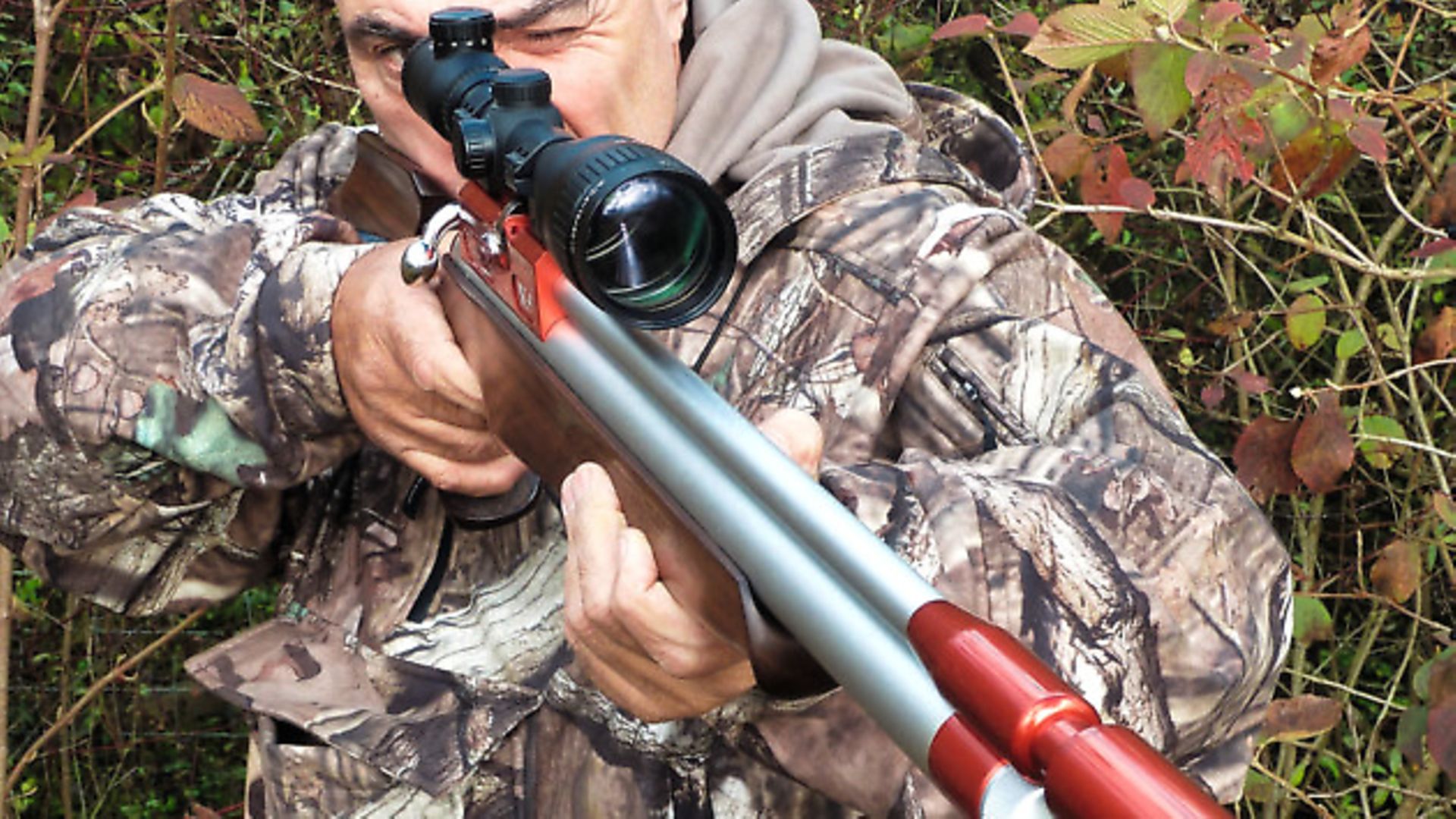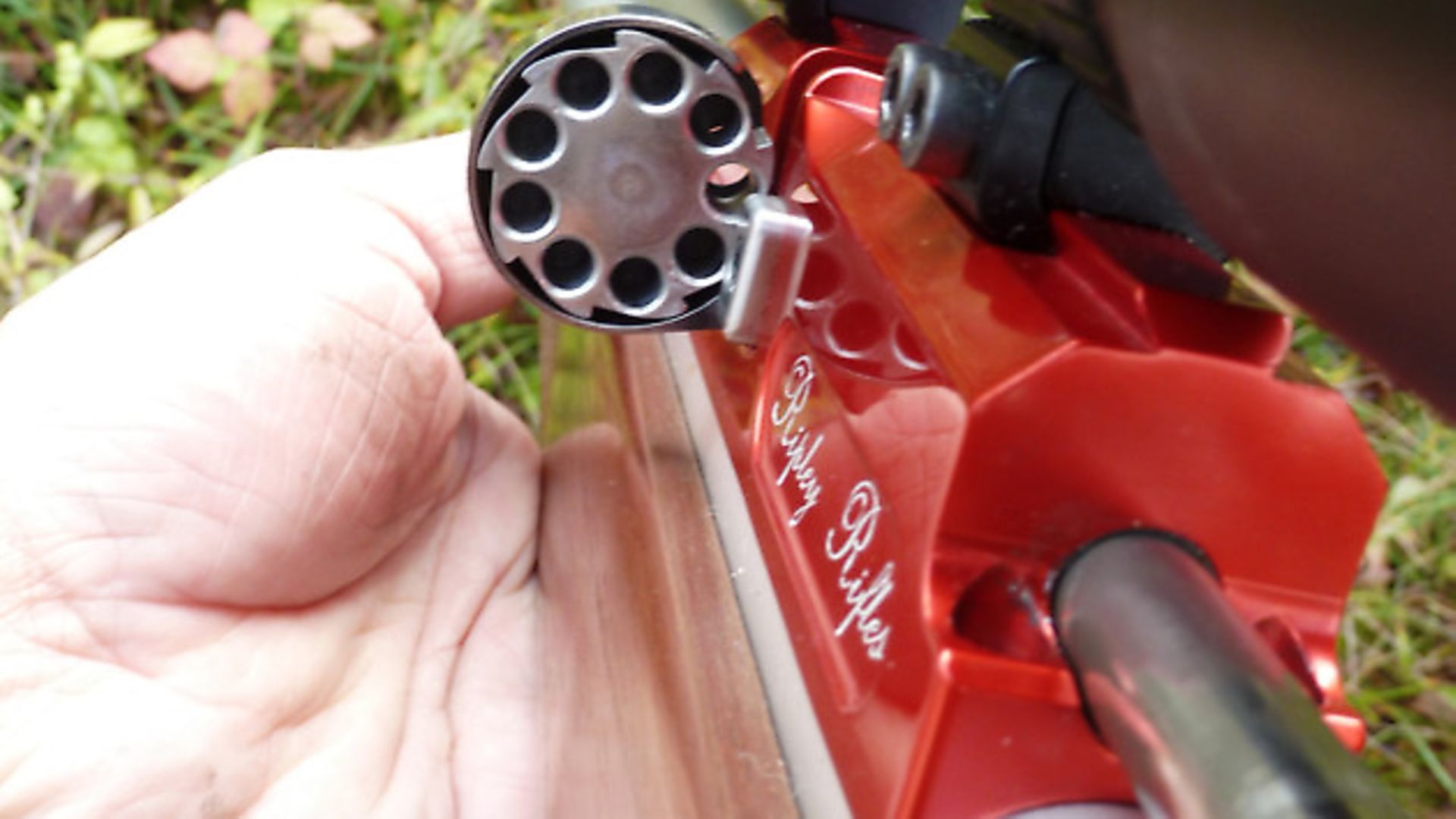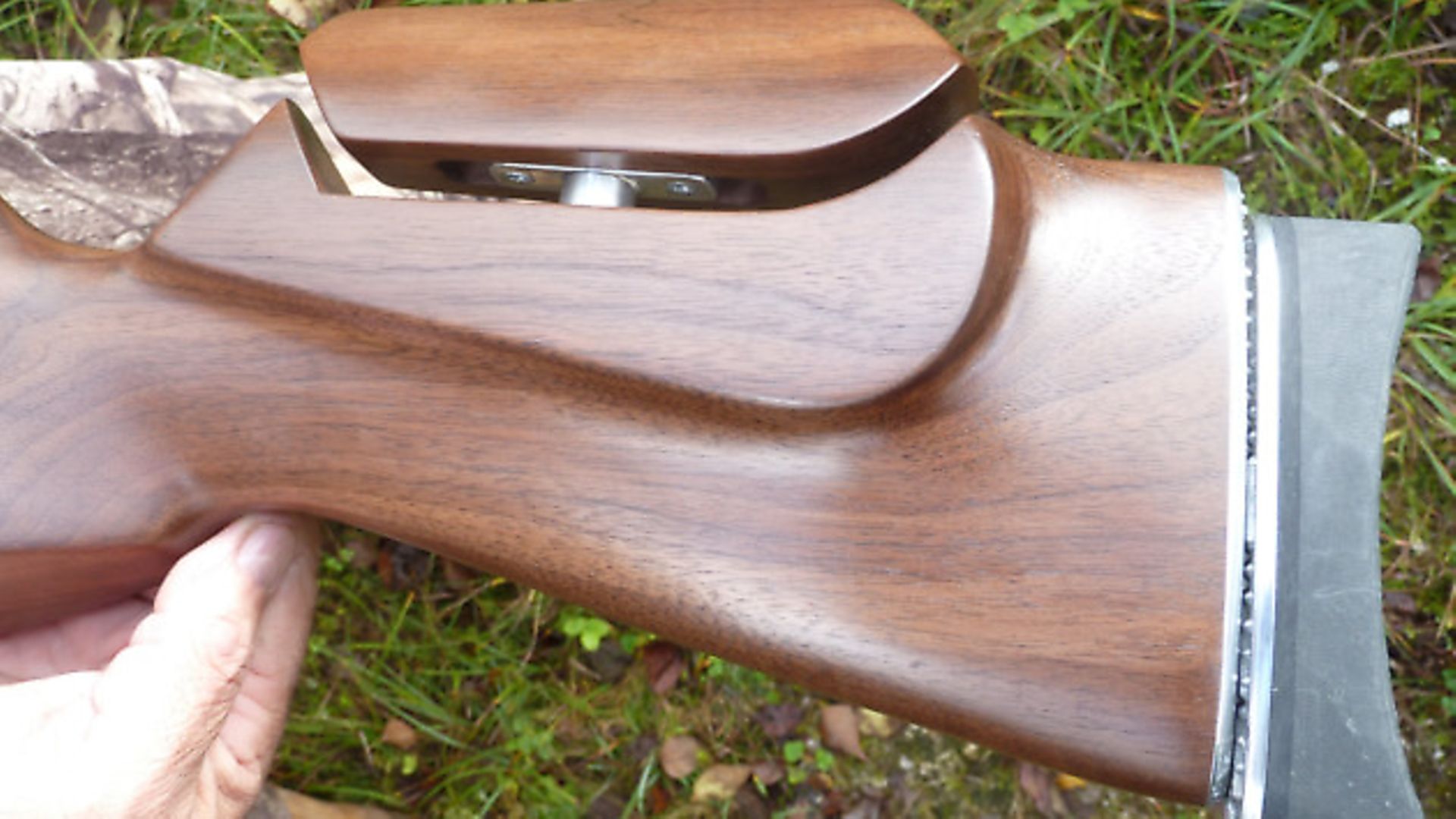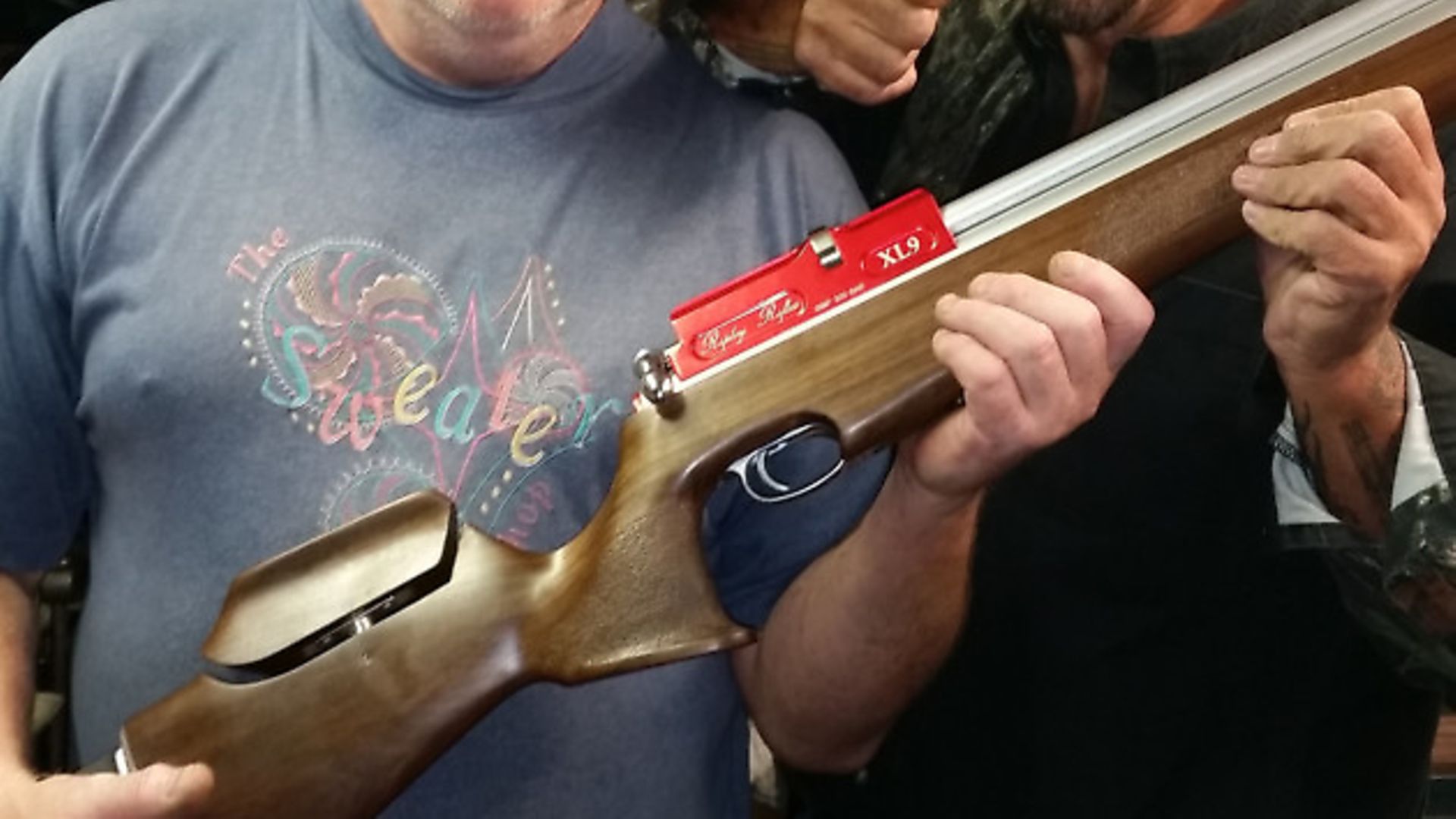Fred Carter treats himself to a remarkable new rifle
 credit: Archant
credit: Archant
It’s been an eventful 12 months for me, to say the least. I’ve managed to sort out my fitness more than I ever managed in the past 30 years and I’ve taken more time out than I would have thought possible, to do what I enjoy and to live how I prefer to live. I’ve also rediscovered the pleasure of shooting my air rifles and what it can do for me and my ‘new’ life. Yes, all in all, it’s been one hell of a year.
A few months ago, I decided that I deserved a treat, and that it would come in the form of a new air rifle. This wouldn’t be a hunting rifle; I’ve got my Air Arms S510 and ProSport for that, and these do everything I need from a legal limit sporter. No, this new gun wouldn’t be a practical tool of my pest controller’s trade, it would be a pure indulgence. I wanted this rifle to shoot as well as anything I’d ever owned, but it had to be different, and it had to be just what I wanted it to be, for whatever reason I chose. Next stop – a phone call to Steve Wilkins of Ripley Rifles.
 credit: Archant
credit: Archant
A Founding Father
Those in the know will be well aware of what Steve Wilkins, and his late father Joe, have contributed to the sport of airgun shooting. Basically, they helped pioneer the development of the modern precharged air rifle, and most of us know where that has taken our sport.
I’ve known Steve for many years, and to me the man is nothing short of a genius. He’s a modest man, and he’s always preferred to work away behind the scenes, rather than spend any time in the spotlight. Steve is never happier than when he’s shut away in his workshop, working on developments and ‘making swarf’, as he calls it. I could use a dozen pages to tell Steve’s story, but he wouldn’t thank me for that, and I’m sure you’d rather I got to the nuts and bolts of this new Ripley of mine, so that’s what I’ll do.
 credit: Archant
credit: Archant
My Rifle, My Way
Once Steve had agreed to make me a rifle, I had to decide what I wanted it to do. With air rifle shooting being all about pinpoint accuracy, that was the first thing I insisted on. Having used Air Arms rifles and proved beyond doubt that they gave me everything I could ask for in terms of straight shooting, I knew I wanted an Air Arms barrel on my new Ripley rifle. There was nothing for it, I would have to ask Air Arms if they’d sell me one of their superb, match-quality barrels. I was overjoyed when my request was granted, and with it the foundation of the new rifle was set in place. Now for the rest of the action.
 credit: Archant
credit: Archant
Action Stations
I asked Steve to build me a bolt-action, auto-loader, and to set the power of my rifle at 11.5 ft.lbs., and to regulate it throughout the charge … without fitting a regulator. I don’t like over-complication, never have, and while I can appreciate that the raise in consistency a regulator provides might help a match shooter, I know I don’t need one. Besides, any PCP with a regulator in it is always more prone to breakdown that one running a well-designed, self-regulating, knock-open firing valve. All in all, I didn’t want a regulator, but I did want 100 shots from a single charge, with each of them capable of hitting the same one-inch target at 45 yards. Finally, I gave Steve my next requirement, and this was one that went against everything I’ve learned as a hunter, as I opted for .22 calibre.
The Calibre Controversy
For over 30 years, even back when everyone wanted .22 because they thought it produced more power, I was firmly in the .177 camp. I’d use .22 for close-range and high-power FAC level hunting, but for everything else at sub-12 ft.lbs., it was .177. The smaller calibre shoots flatter, and makes it easier for me to put my pellets exactly where they’ll be most effective.
I’ve used .177 for most of my hunting life and I know by heart how my rifles perform at every practical range. I even use .177 for rats and ferals, these days, because I can place those little slugs in areas where it would make no difference if they were .177, .22 or .303. Believe me, a head-shot rat is despatched instantly with a .177, or I’d have used .22. I use .177 because it’s the best legal-limit general hunting calibre of them all. So, why have I gone for .22 this time?
Change for Change’s Sake
I’ve decided to go for .22, purely and simply because I want to explore its capability. I’ve never really studied it and I’m certainly no expert on using .22 in the field in non-FAC power levels, so I think it’s high time I found out all I can about it. There aren’t that many new frontiers out there for someone who has been shooting airguns as long as I have, and I’m looking forward to learning some new stuff.
My tests have only just begun, and I’m nowhere near ready to make claims about the potential accuracy of .22 calibre, but with this Ripley I’ve got the right tool to find out. First trials show Air Arms Diabolo Field pellets to be the best for this rifle (no surprise there, then), and I’ve already shot a bunch of tidy groups out to 40 yards under hunting conditions. I already know that this rifle will shoot half-inch groups out to 35 yards, and when I’m more familiar with the trajectory of .22, I’d have no hesitation in shooting rabbits with it at that range. As I say, I didn’t get this rifle for hunting, but it’s what I do, so you never know.
Stock answers
When it came to the stock, again I wanted simplicity and function. I also wanted an adjustable cheekpiece and butt pad, because even when I’ve had stocks made for me, I’ve wanted to change things after a while, once I’d settled in with the rifle. Another requirement was a slimmed-down fore end, because, despite having large hands, I don’t like bulky woodwork. Steve had the oiled walnut stock made for me, and it’s exactly what I wanted. I can’t say fairer than that.
That ‘Distinctive’ Finish
So, what’s the red-and-silver metalwork all about, then? Easy – it’s there because it’s different and I fancied something I’d never had before. In fact, that finish is entirely the opposite of what I’ve always gone for, and that’s why I love it. I’m sure plenty of you will wince when you see how ‘flash’ my new Ripley action is, but I absolutely love it. After a lifetime of using practical, sensible, understated sporters, the pure indulgence of that new rifle makes me smile, and that’s what my new Ripley was designed to do.
Signing Off …
First, just in case anyone was wondering, let me just confirm that this new rifle was no freebie. I paid full-whack for it and I was happy to do so. Second, I was shooting it just before I sat down to write this article, and the more I test it, the more it impresses me. The trigger is perfect, that stock gives me all the fit and control I could use, and when I do my job right, every pellet lands where I aim it.
Yes, my new Ripley is an indulgence, but it’s still an incredible shooting machine, and I’m having more fun with it than an airgunner of my age has any right to. You never know, I might even get to like .22 calibre!